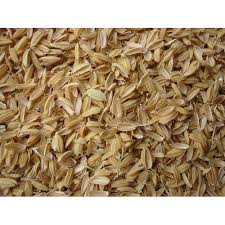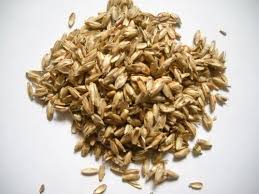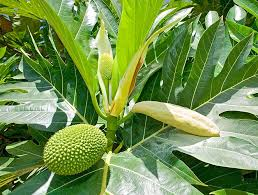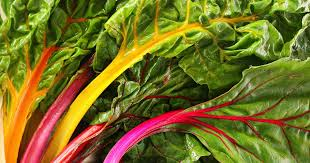Wheat Husk: Economic Importance, Uses and By-Products
Wheat husk, also known as wheat chaff or wheat straw, is the protective outer layer that surrounds the edible kernel (grain) of the wheat plant. It is a natural byproduct of wheat cultivation and harvesting. The main structural component of plant cell walls, cellulose provides strength and rigidity to the husk.
Another type of complex carbohydrate, hemicellulose helps bind the cellulose fibers together and provides flexibility to the husk. This complex organic polymer provides additional strength to the husk’s structure and helps protect the inner grain from external factors.
Wheat husk contains small amounts of minerals such as silica, potassium, and calcium, which contribute to its hardness and resilience. The husk acts as a protective layer for the inner wheat kernel, shielding it from insects, moisture, and physical damage.
The husk helps regulate the moisture content of the wheat kernel, preventing it from drying out too quickly. In nature, the husk aids in seed dispersal. As the husk dries and cracks, it releases the enclosed grain, allowing it to be carried by the wind. Wheat husk can be used to make various products, such as paper, packaging materials, and even biodegradable disposable tableware.
It is important to note that wheat husk is a renewable and biodegradable resource. While it’s not typically consumed directly by humans, its various applications make it a valuable component of agricultural and industrial processes.
The Economic Importance and Uses of Wheat Husk

Wheat husk, also known as wheat chaff or wheat straw, is the outer protective layer of the wheat grain that remains after the threshing process.
While it is often considered a waste product in some agricultural contexts, it has several economic uses and benefits:
1. Animal Bedding: Wheat husk can be used as bedding material for livestock, such as cattle, poultry, and horses. It provides a comfortable and absorbent surface for animals to rest on, while also helping to manage waste and maintain hygiene in animal housing.
2. Mulching and Soil Improvement: Ground or chopped wheat husk can be used as mulch in agricultural fields and gardens. It helps retain soil moisture, suppress weed growth, and regulate soil temperature. Over time, as it decomposes, it enriches the soil with organic matter, improving its structure and fertility.
3. Bioenergy and Biomass: Wheat husk can be utilized as a renewable energy source. It can be burned to produce heat energy or converted into biofuels like biogas or bioethanol. These applications contribute to reducing reliance on fossil fuels and decreasing greenhouse gas emissions.
4. Mushroom Cultivation: Wheat husk can serve as a substrate for cultivating mushrooms, particularly oyster mushrooms. Its fibrous nature and nutritional content provide a suitable medium for mushroom growth.
Read Also: Wheat Pollen: Economic Importance, Uses and By-Products
5. Craft and Artistic Purposes: In some regions, wheat husk is used for crafting various items, such as traditional baskets, hats, decorative items, and even artwork. Its flexibility and natural appearance make it suitable for creative endeavors.
6. Packaging Material: Wheat husk can be processed into biodegradable and environmentally friendly packaging materials. These materials can be used for products like trays, containers, and other disposable items, offering a sustainable alternative to conventional plastic-based packaging.
7. Paper and Cardboard Production: The cellulose content in wheat husk can be extracted and used for paper and cardboard production. This can help reduce the demand for wood pulp and lower the environmental impact of the paper industry.
8. Insulation Material: Wheat husk can be processed into insulation materials used in construction. These materials provide thermal and acoustic insulation, contributing to energy efficiency in buildings.
9. Composting: Wheat husk is a valuable addition to compost piles due to its carbon-rich composition. It balances the nitrogen-rich materials in compost, facilitating the breakdown of organic matter and producing nutrient-rich compost for soil enrichment.
10. Erosion Control: Wheat husk can be applied to slopes and areas prone to erosion. It helps stabilize the soil, preventing erosion caused by wind and water runoff.
11. Livestock Feed: While less common, wheat husk can be used as a component in livestock feed, especially for ruminant animals like cattle and goats. However, its nutritional value is limited compared to other feed sources.
The Products and By-products That Can Be Derived From Wheat Husk

Wheat husk, also known as wheat chaff or wheat straw, is the outer protective layer of the wheat grain. It is a by-product of wheat processing and has a range of potential applications and uses due to its composition.
Here are some products and by-products that can be derived from wheat husk:
1. Animal Feed: Wheat husk can be used as a component in livestock feed, particularly for ruminant animals like cattle and sheep. It provides dietary fiber and some nutritional value.
2. Bedding Material: Crushed or processed wheat husk can be used as bedding material for livestock, such as poultry and horses. It provides a comfortable and absorbent surface.
3. Mulch: Wheat husk can be used as mulch in gardening and agriculture. It helps retain moisture in the soil, control weed growth, and regulate soil temperature.
Read Also: Wheat stigma: Economic Importance, Uses and By-Products
4. Biofuel: Wheat husk can be processed to produce biofuels like biomass pellets or briquettes. These can be burned to generate heat or electricity, serving as a renewable energy source.
5. Building Material: In some cases, wheat husk can be mixed with other materials to create composites for construction purposes. This can include panels, boards, and insulation materials.
6. Packaging Material: Wheat husk can be used to produce biodegradable and environmentally friendly packaging materials, reducing the reliance on non-biodegradable plastics.
7. Mushroom Cultivation: Wheat husk can be used as a substrate for growing mushrooms, providing the necessary nutrients and structure for their growth.
8. Soil Amendment: Wheat husk can be composted and added to soil as an organic amendment, improving soil structure, water retention, and nutrient content.
9. Paper Production: Wheat husk fibers can be utilized to make paper and paper products, contributing to the reduction of wood-based paper production and deforestation.
10. Cattle Bedding: Wheat husk can be used as bedding for cattle and other livestock, providing a comfortable and absorbent surface in barns and stables.
11. Insulation Material: Wheat husk can be processed to create insulation materials that can be used in the construction industry to improve energy efficiency in buildings.
12. Biodegradable Products: Wheat husk can be used as a raw material for producing biodegradable products like disposable plates, cups, and utensils.
13. Soil Erosion Control: Wheat husk can be applied to slopes and embankments to help control soil erosion, thanks to its ability to prevent runoff and hold soil in place.
14. Fertilizer: When properly processed, wheat husk can contribute to the production of organic fertilizers that release nutrients slowly into the soil.
15. Animal Bedding: Wheat husk can be used as bedding for small pets like rabbits, hamsters, and guinea pigs, providing a comfortable and safe habitat.
In conclusion, important to note that the utilization of wheat husk for these purposes may require processing and treatment to make it suitable for specific applications. Additionally, the feasibility and viability of these products and by-products may vary based on local conditions, technology, and market demand.
Read Also: Trends in Crop Production Nationally and Globally









